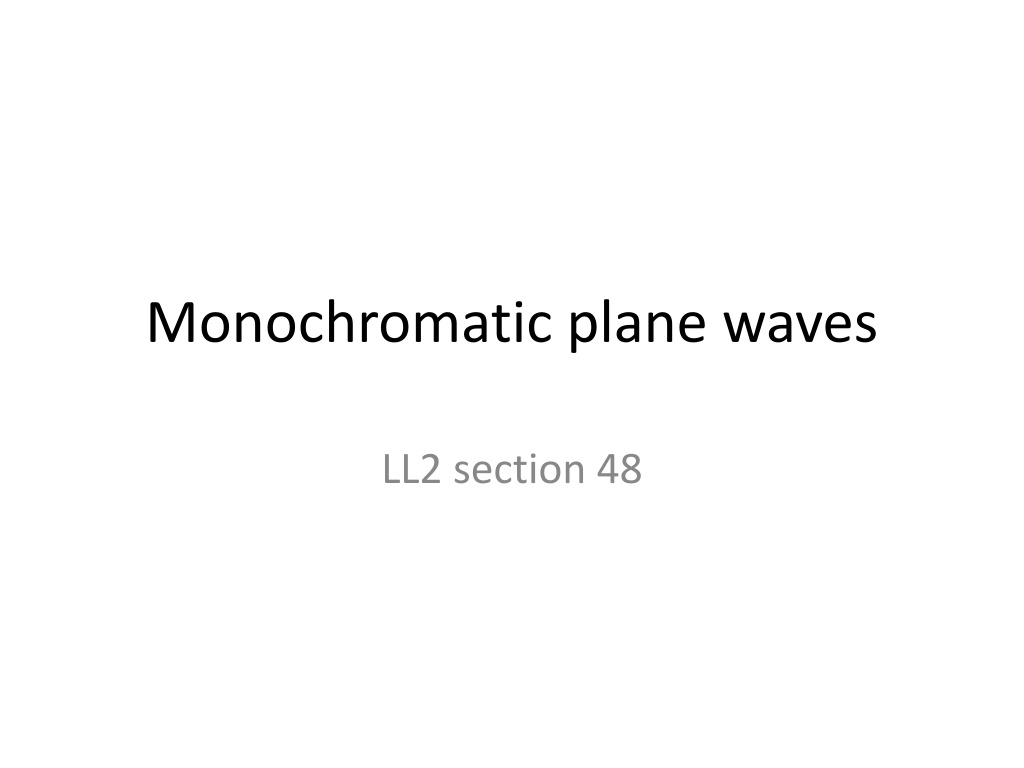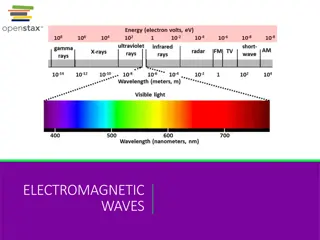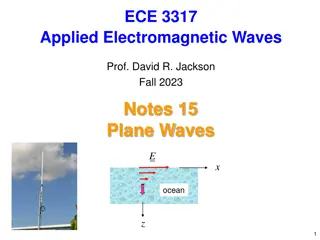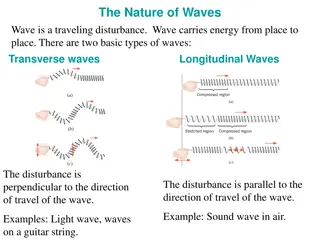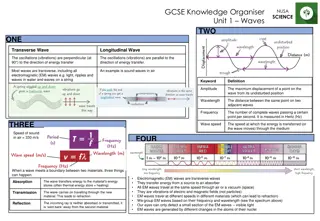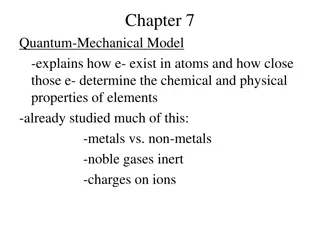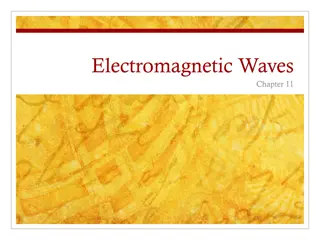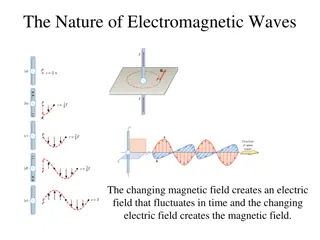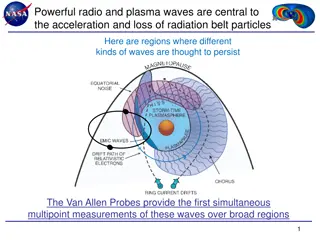Understanding Monochromatic Plane Waves in Electromagnetic Theory
Explore the characteristics and properties of monochromatic plane waves in electromagnetic theory, including their spatial distribution, propagation in the positive X direction, wavelength, linear and non-linear operations, polarization direction, elliptical and circular polarization, and the relationship between vector potential and phase. Gain insights into the complex nature of these waves and their applications in wave propagation.
Uploaded on Aug 21, 2024 | 0 Views
Download Presentation

Please find below an Image/Link to download the presentation.
The content on the website is provided AS IS for your information and personal use only. It may not be sold, licensed, or shared on other websites without obtaining consent from the author. Download presentation by click this link. If you encounter any issues during the download, it is possible that the publisher has removed the file from their server.
E N D
Presentation Transcript
Monochromatic plane waves LL2 section 48
Plane waves are monochromatic when f (= A, E, and H) depends on time according to cos( t + ), = cyclic frequency This differential equation gives the spatial distribution of the plane wave
Plane wave propagating in positive X direction: f = f (t-x/c) Monochromatic plane wave is a simple periodic function of t-x/c Complex vector amplitude. A is a superposition of cos and sin E and H have analogous forms with same frequency
Wavelength: = 2 c / = period of variation of field with x at fixed t Wavevector phase of wave
Linear operations Omit Re and operate with complex fields Non-linear operations Take Real part first !!!!!
Direction of the field (polarization) Complex vector Also complex Half the phase of E02 Let Still complex, but b2 = |E02| is real b1 and b2 are perpendicular
+ if b2 is along +Z Equation of an ellipse elliptical polarization
If b12 = b22, then the ellipse is a circle, and |E| = constant. Circular polarization. Choice of y, z axes is now arbirtrary. + gives right
If b1 or b2 = 0, then ellipse is a line. Linear polarization plane polarized Any elliptical polarization is a superposition of plane polarized waves.
4-wavevector Contract with the position 4-vector =the phase, a scalar Square it. Implies Vector potential Must be a solution of
For any plane wave with k || X the non-zero energy momentum tensor components are Energy density
Doppler effect: Lorentz transform of wave 4-vector. What is in frame K moving at V relative to K0. Define 0as the proper ( true ) frequency of the source in its rest frame K0
Earth star In Earth frame
Numerator -> 1, denominator -> binomial expansion Source receding gives red shift Redshift But now V/c must be larger to get a significant change in compared to the = case.
